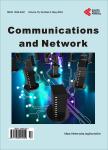Highway Toll Collection Method for Connected Automated Vehicle Platooning Using Spatio-Temporal Grid Reservation
Highway Toll Collection Method for Connected Automated Vehicle Platooning Using Spatio-Temporal Grid Reservation作者机构:Network Information Systems Doshisha University Kyotanabe Japan Mobility Research Center Doshisha University Kyotanabe Japan
出 版 物:《Communications and Network》 (通讯与网络(英文))
年 卷 期:2022年第14卷第4期
页 面:171-199页
学科分类:08[工学] 082303[工学-交通运输规划与管理] 082302[工学-交通信息工程及控制] 0823[工学-交通运输工程]
主 题:Autonomous Vehicle Platoon Highway Toll Tax Grid-Based Toll Charges Spatio-Temporal-Grid Dynamic Map
摘 要:In the intelligent transportation system, the autonomous vehicle platoon is a promising concept for addressing traffic congestion problems. However, under certain conditions, the platoon’s advantage cannot be properly developed, especially when stopping for electronic toll collection (ETC) to pay the toll fee using the highway. This study proposes a software architectural platform that enables connected automated vehicles to reserve a grid-based alternative approach to replace current highway toll collection systems. A planned travel route is reserved in advance by a connected automated vehicle in a platoon, and travel is based on reservation information. We use driving information acquired by communication mechanisms installed in connected automated vehicles to develop a dynamic map platform that collects highway toll tax based on reserving spatio-temporal grids. Spatio-temporal sections are developed by dividing space and time into equal grids and assigning a certain road tax rate. The results of the performance evaluation reveal that the proposed method appropriately reserves the specified grids and collects toll taxes accurately based on a spatio-temporal grid with minimal communication time and no data package loss. Likely, using the proposed method to mediate driving on a one-kilometer route takes an average of 36.5 seconds, as compared to ETC and the combination of ETC and freeway road lane methods, which take 46.6 and 53.8 seconds, respectively, for 1000 vehicles. Consequently, our proposed method’s travel time improvements will reduce congestion by more effectively exploiting road capacity as well as enhance the number of platoons while providing non-stoppable travel for autonomous vehicles.



